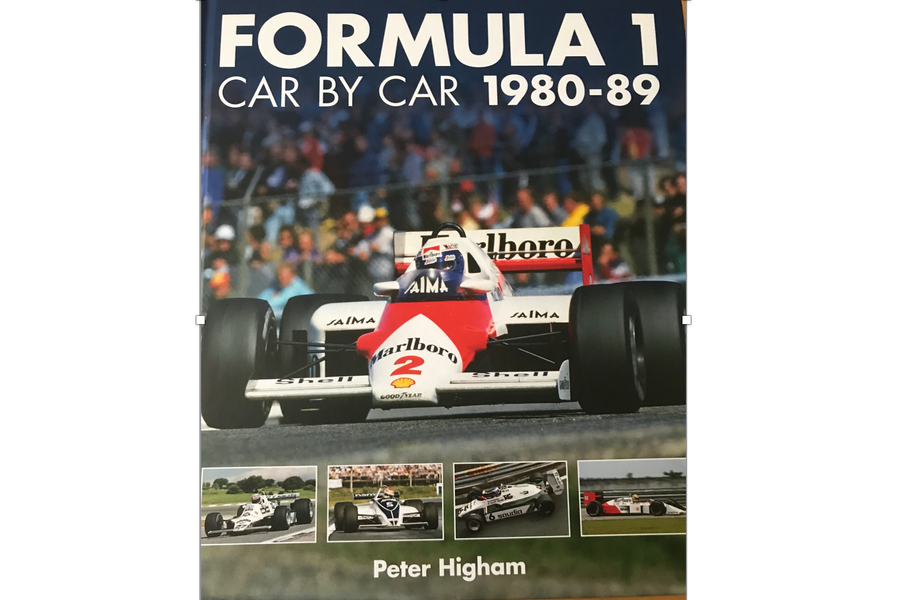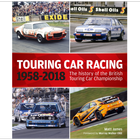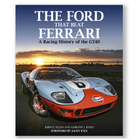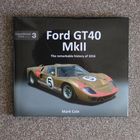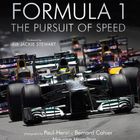Bookshelf: FORMULA 1 – Car by Car 1980 to 1989 by Peter Higham
- 31 Dec 2018
- Bookshelf
 By Paul Tarsey
By Paul Tarsey
This book, the third in Evro’s multi-volume, decade-by-decade series covering the entire history of Formula 1, has been sitting on my coffee table for a month now. It was my intention to read enough of it to be able to write a decent review and then come back to the detail at my leisure. The problem with that plan is that it is all detail. And all the better for it.
The general premise of the book covers;
• Year-by-year view of each season, running through the teams — and their various cars — in order of importance.
• An ongoing decade long insight into the two teams which dominated the decade, McLaren and Williams taking all but two of the drivers’ and constructors’ titles: McLaren’s World Champions were Niki Lauda (1984), Alain Prost (1985, 1986 and 1989) and Ayrton Senna (1988), while Williams’s were Alan Jones (1980), Keke Rosberg (1982) and Nelson Piquet (1987).
• The two other significant winning teams were Brabham, which took Nelson Piquet to two drivers’ titles (1981 and 1983), and Ferrari, which won two constructors’ titles (1982 and 1983).
• Other winning marques were Benetton, Ligier, Lotus, Renault and Tyrrell.
• Over 600 photos — as you might expect, entirely in colour show every type of car raced by every team and driver, presenting a comprehensive survey of all participants.
• The sweep of the decade covers the huge technical advances, particularly in the new-fangled carbon-fibre construction and ever-increasing power outputs.
• There are detailed text includes car specifications and technical essentials.
I should have known that I would get lost in this book from the outset. Peter Higham has been writing fabulously detailed books for years, decade even. Every book is full of the sort of detail which will have the typical anorak frothing at the mouth. Therefore, I made the conscious decision not to rush through the 300 pages of the book, but instead to keep it safe, like a fine wine, until I had the time to enjoy it properly. And enjoy it I did.
There is scarcely a single sentence that does not contain a fact. Some are well known, inevitably, but there is a lot of additional material as well. I am sure that I knew some of the information in period but have let it slip from my memory, whilst some is completely new. The 1980s saw the first turbo champion in 1983 and the rise of Senna, Piquet and Prost. It saw the return of the battle scarred Niki Lauda and of course the high-drama career of Nigel Mansell.
But it isn’t the front runners who grabbed my attention in this weighty tome, because these were the times of having to qualify for a place on the grid. In some cases even to have to qualify for the right to try and qualify! So it is the minnows who steal the show in this book; in 1982 for example, we saw entries from Theodore, Toleman and ATS. By 1986 there were Osella, Zakspeed and AGS and by the end of the decade we saw entries from Lois Minardi, Rial Racing and Larrousse.
The format of the book is year-by-year, hence making the reading slightly easier. Each year has a panel which shows the results of every Grand Prix (of course) plus a list of winners, the final standings in both the drivers’ and constructors’ championships.
As is so often the way, this book also serves to show the strength of Historic Racing in 2018. Photographs of the Ragno Arrows, the Parmalat Brabham or the Saudia Williams could easily been taken in 2018, these cars all being active in the various single seater historic championships. However it also goes to show what we are missing; wouldn’t it be great to see some of the other marques out there too?
Production values are extremely high, with superb photography throughout, and the quality of the paper and construction means that if this book were sold by the pound it would be a very cheap book.
Paul Tarsey
Popular Articles
-
 December Podcast: Book Month as the Team Suggest some Stocking Fillers from Santa6 Dec 2025 / Podcast
December Podcast: Book Month as the Team Suggest some Stocking Fillers from Santa6 Dec 2025 / Podcast -
 November Podcast: Jim Clark, the Man, the Museum and the Greatest Season in Motorsport11 Nov 2025 / Podcast
November Podcast: Jim Clark, the Man, the Museum and the Greatest Season in Motorsport11 Nov 2025 / Podcast -
 October 2025: Romain Dumas - Le Mans Winner and Historic Ace!3 Oct 2025 / Podcast
October 2025: Romain Dumas - Le Mans Winner and Historic Ace!3 Oct 2025 / Podcast -
 September 2025: Nigel Mansell Talks Formula One, Indycar and More!10 Sep 2025 / Podcast
September 2025: Nigel Mansell Talks Formula One, Indycar and More!10 Sep 2025 / Podcast


